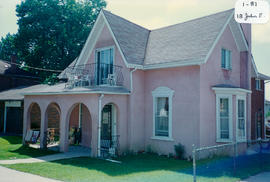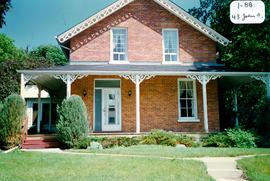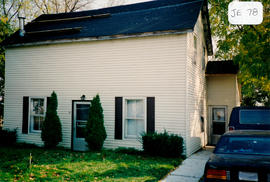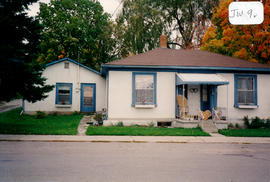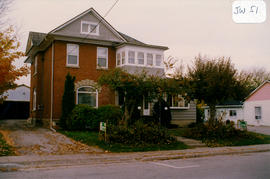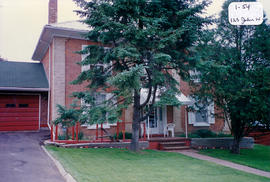18 John Street East - The Morton House
- CA BWGPL GJ-HB-2017-04-04-03
- Pièce
- 1996
Fait partie de George Jackson fonds
The Morton House is located mid-block on the south side at 18 John St. East (between Barrie and Nelson Streets). There is a common laneway adjacent to the lot on the south side. The house was built around the 1860-80’s in the Gothic Revival Cottage style. It was the home of Miss Morton, an Anglican Church Sunday School teacher. George Morton, who was born in Holland Landing, served overseas in WWI. When the second Bradford Post Office was built in 1935-36, he became the Post Master and held that position until he died.
The 1½-storey, three-bay cottage has a two-storey, rear wing that originally contained a two-storey stable and loft above. It was attached to the bake shop’s stable. There was also a large verandah on the laneway side. The garden on the east side of the house eventually became the location of a house built by Emery Belfry.
The 2000 inventory noted that the house has a modified rectangular plan and a centre entrance hall. There is a medium-pitched, gable roof with a centre gable over the entrance and a symmetrical façade. The existing porch and second-floor balcony railing replace the original verandah. The original half sidelights (with lower wood panelling) and transom at the entrance door still remain. The house has narrow window openings. Ground-floor windows are double-hung with 2/2 panes and round-arched, decorated, wood trim. A bay window on the west side (at the ground floor) has a shallow, hip roof set on a plain, wood cornice. The second-floor windows and sliding door are not original. There is a single, exterior chimney on the west side. The house has wood frame construction with painted, stucco cladding. The inventory also notes that some original details are overshadowed by the newer porch addition. (1, 2, 3)
Sans titre

